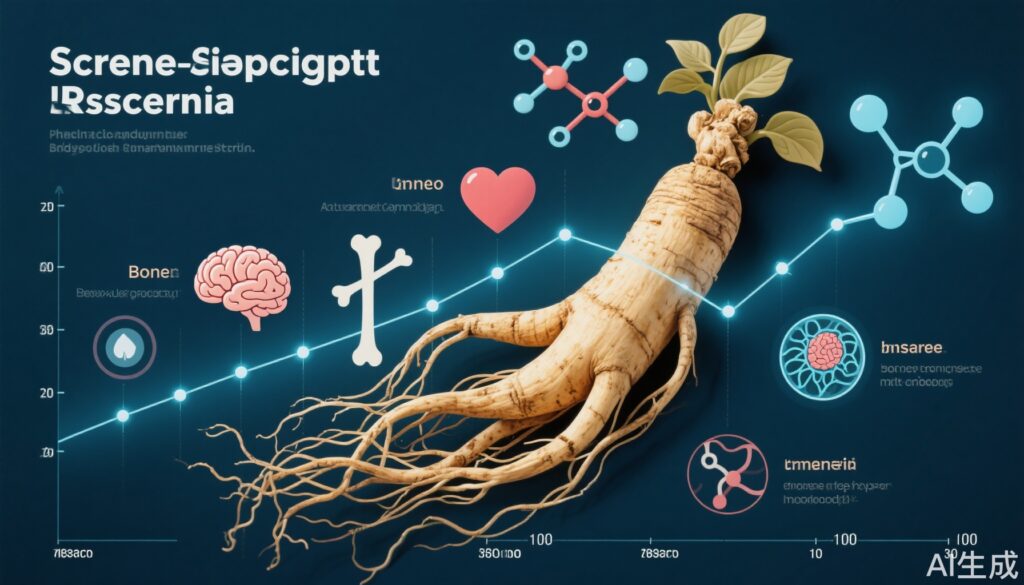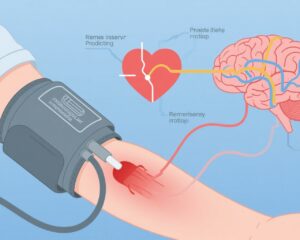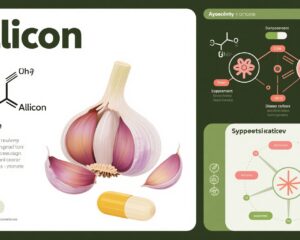Highlights
- Ginseng exhibits multifaceted clinical benefits including neuroprotection, anti-inflammatory, cardiovascular support, metabolic regulation, and bone health enhancement.
- Recent meta-analyses affirm Panax notoginseng saponins’ efficacy in ischemic stroke functional recovery with favorable safety profiles.
- Innovations in plant-derived exosomes and novel drug delivery systems enhance ginsenoside bioavailability and targeting for oral and systemic diseases.
- Future research emphasizes molecular mechanisms, precision medicine approaches, microbiome interactions, and high-quality clinical trials to consolidate ginseng’s therapeutic potential.
Background
Ginseng, particularly species like Panax ginseng, Panax notoginseng, and Panax quinquefolius, holds a venerable place in traditional medicine, attributed with tonic, adaptogenic, and restorative properties. The increasing prevalence of chronic diseases such as neurodegenerative disorders, cardiovascular diseases, diabetes, osteoporosis, and ischemic events underscores the need for safe, effective adjunctive therapies. Conventional synthetic drugs often present challenges including adverse effects and incomplete efficacy, thereby stimulating interest in phytomedicines like ginseng. However, challenges related to compositional complexity, low bioavailability, and unclear mechanisms have historically limited clinical translation.
Key Content
1. Neurological and Cognitive Applications
Multiple studies document ginseng’s cognitive-enhancing and neuroprotective effects in age-related cognitive decline, Alzheimer’s disease (AD), and dementia. Korean Red Ginseng (KRG) exhibits pleiotropic effects, improving cognition and addressing overall systemic health, potentially mitigating acetylcholine esterase inhibitors’ side effects. Preclinical and clinical evidence highlights ginsenosides’ ability to inhibit beta-amyloid (Aβ) production, enhance Aβ clearance, suppress tau hyperphosphorylation, and improve cognitive function, with notable benefit in patients without apolipoprotein ε4 allele. Ginseng also modulates regulatory T cells and mitochondrial function, thereby combating inflammaging and promoting brain aging delay. However, precise drug-target-efficacy relationships remain underexplored, urging focused molecular research.
2. Cardiovascular Health and Ischemic Stroke
Panax notoginseng saponins (PNS) have robust evidence from a network meta-analysis involving 50 RCTs and over 18,000 patients indicating a superior functional outcome in ischemic stroke when combined with aspirin versus traditional antiplatelet therapies. PNS exert antiplatelet, anti-inflammatory, antioxidative, and angiogenic effects contributing to improved neurological recovery. Ginsenoside Rg1 specifically shows promising mechanistic roles in endothelial function enhancement, anti-proliferative effects on vascular smooth muscle, inflammation modulation, and cardioprotection. Despite promising preclinical data, clinical translation faces challenges in standardization and bioavailability.
3. Metabolic and Diabetic Complication Management
Pyroptosis, an inflammatory programmed cell death pathway, contributes significantly to diabetes progression and complications. Ginseng and derivatives modulate pyroptosis pathways—Nrf2/HO-1, NF-κB/NLRP3 inflammasome, TXNIP-related signaling—ameliorating oxidative and ER stress, thus protecting against diabetic nephropathy, retinopathy, cardiomyopathy, and neuropathy. Nonetheless, clinical evidence beyond animal and cell models is limited and warrants rigorous trials.
4. Bone Health and Osteoporosis
Panax notoginseng demonstrates efficacy in preventing and treating osteoporosis through multi-pathway regulation involving Wnt/β-catenin, BMP, AMPK/mTOR, and estrogen receptor signaling. Phytochemical constituents such as saponins, flavonoids, and polysaccharides mediate anti-inflammatory, antioxidative, and angiogenic effects promoting bone quality. Clinical trials, primarily using traditional patent medicines containing P. notoginseng, report favorable outcomes, although larger, well-designed studies are needed.
5. Antiviral and Immunomodulatory Properties
Ginseng compounds exhibit broad-spectrum antiviral activities targeting viruses including influenza, SARS-CoV-2, hepatitis viruses, and others through immunomodulation and direct antiviral effects. These properties relate to enhanced macrophage polarization, regulatory T cell activation, and antioxidant pathways.
6. Emerging Research Domains: Exosomes and Delivery Systems
Plant-derived exosomes (PDEs) from ginseng preserve native bioactive compounds and provide advantages in stability, bioavailability, and targeted delivery, a major leap over conventional extracts. Similarly, novel ginsenoside drug delivery systems employing nanoparticles, liposomes, and hydrogels improve bioactivity and clinical applicability, particularly relevant for oral diseases prone to salivary dilution and pathogen infection.
Expert Commentary
Ginseng’s multifaceted clinical applications, spanning neurological, cardiovascular, metabolic, and skeletal systems, reflect its complex phytochemistry and adaptogenic nature. Contemporary evidence increasingly supports its adjunctive role, especially in ischemic stroke and cognitive disorders. However, challenges remain in standardizing extracts, isolating bioactive components, ensuring bioavailability, and conducting large-scale randomized controlled trials with rigorous endpoints. The integration of transcriptomic and microbiome research is illuminating ginseng’s interactions at molecular and systemic levels, underscoring precision phytotherapy potential. Furthermore, the innovative exploration of PDEs and advanced delivery technologies present promising avenues to overcome historical barriers. Despite the enthusiasm around pleiotropic effects, careful assessment of safety, long-term toxicity, and interaction with conventional therapies is crucial for clinical translation.
Conclusion
The clinical application landscape of ginseng has advanced substantially, with strong mechanistic rationales and supportive clinical data particularly in ischemic stroke, cognitive impairment, metabolic diseases, and bone health. Future research directions should prioritize well-powered multicenter clinical trials, molecular mechanism elucidation, microbiome interaction studies, and the development of precision delivery platforms to maximize therapeutic efficacy and safety. Enhanced understanding of ginseng’s pharmacokinetics and pharmacodynamics, along with regulatory harmonization, will be essential to integrate this ancient phytomedicine into modern evidence-based clinical practice.
References
- Wang X, et al. Plant-derived exosomes: Unveiling the similarities and disparities between conventional extract and innovative form. Phytomedicine. 2025 Sep;145:157087. PMID: 40714420.
- Zhang Y, et al. Comparative effectiveness of Panax notoginseng saponins-related agents and antiplatelet agents in ischemic stroke: A systematic review and network meta-analysis. J Ethnopharmacol. 2025 Aug 4;120364. PMID: 40769440.
- Lee S, et al. Transcriptomic strategy provides molecular insights into the growth and ginsenosides accumulation of Panax ginseng. Phytomedicine. 2025 Jul 25;143:156834. PMID: 40440906.
- Kim JH, et al. Current clinical trends in developing strategies for dementia disorders and the role of Korean Red Ginseng. J Ginseng Res. 2025 Jul;49(4):342-347. PMID: 40621086.
- Park H, et al. Comprehensive understanding and underlying molecular mechanisms of the adaptogenic effects of Panax ginseng. J Ginseng Res. 2025 Jul;49(4):356-365. PMID: 40621085.
- Wang Q, et al. Targeting pyroptosis: A novel strategy of ginseng for the treatment of diabetes and its chronic complications. Phytomedicine. 2025 Mar;138:156430. PMID: 39892311.
- Chen L, et al. The potential therapeutic effects of Panax notoginseng in osteoporosis: A comprehensive review. Phytomedicine. 2025 Jul;142:156703. PMID: 40354676.
- Li J, et al. Roles and mechanisms of ginsenoside Rg1 in coronary artery disease: Progress and perspectives. J Ginseng Res. 2025 May;49(3):225-236. PMID: 40453345.
- Zhao L, et al. Ginseng in delaying brain aging: Progress and Perspectives. Phytomedicine. 2025 May;140:156587. PMID: 40049102.
- Sun Y, et al. Antiviral potential of ginseng: Targeting human pathogenic viruses with compounds derived from ginseng. J Ginseng Res. 2025 Mar;49(2):105-117. PMID: 40061485.



